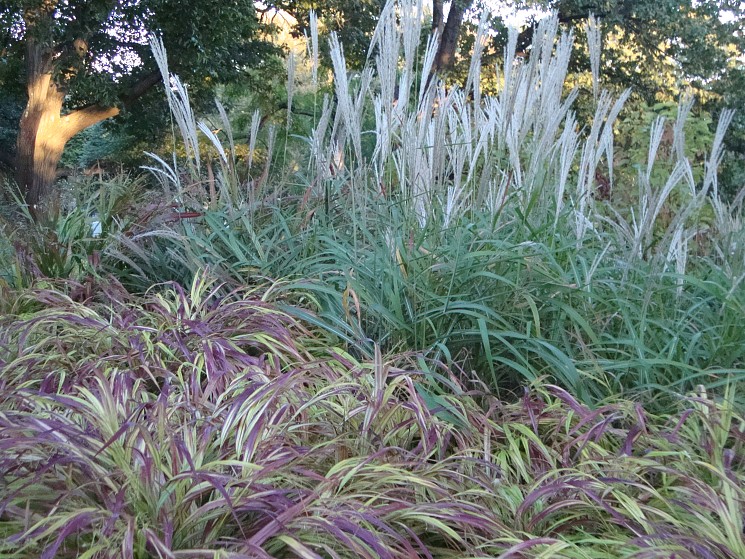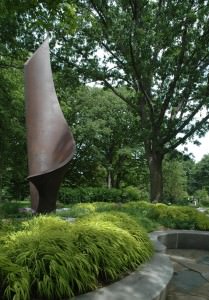Grasses

Grasses have always graced the natural landscapes of the earth. Now they are coming into our gardens, bringing sound, movement, lush volume and abiding color.
– Carol Ottesen
Look in any direction and you are likely to see grasses. True grasses belong to a family known as Poaceae, which is comprised of more than 600 genera, and 9,000-10,000 species. This is one of the largest and most successful plant families. It has been estimated that at least 20% of the earth may be covered by grasses. Undeniably important to humans, all the cereal grains; rice, oats, wheat, rye, barley, corn, and sorghum are members of this plant family. All the various species have certain similarities – narrow leaves with parallel veins, and mostly hollow, and jointed, round stems.
Of course all of our lawns are composed of members of this family. Additionally, Mount Auburn Cemetery in keeping with a desire to perpetuate a more sustainable landscape has incorporated many varieties of ornamental grasses. These come with a wide variety of size, form, texture, and overall color to enhance the grounds year-round. In addition to beauty, they provide durability, as most are pest and disease-free, and drought tolerant. Grasses bring movement to the landscape, swaying sensuously with the summer breeze. A stronger wind rustling their leaves may provide a natural orchestral accompaniment to a visitor’s contemplation.
 Many different kinds of ornamental grasses may be found throughout our landscape. A fine planting design using numerous grasses is located at our flagpole on Meadow Road. Other areas with beautiful grasses are Birch Gardens, Auburn Lake, Willow Pond Knoll, as well as at numerous family lots. To list all of our grasses would be beyond the scope of this article, but we mention here one colorful example.
Many different kinds of ornamental grasses may be found throughout our landscape. A fine planting design using numerous grasses is located at our flagpole on Meadow Road. Other areas with beautiful grasses are Birch Gardens, Auburn Lake, Willow Pond Knoll, as well as at numerous family lots. To list all of our grasses would be beyond the scope of this article, but we mention here one colorful example.
Hakonechloa macra ‘Aureola’, golden Japanese fountain grass is an elegantly, 12 to 18-inch tall, mounded plant, with a cascading habit. Its yellow leavesare ½” wide, with a narrow green stripe. The species is native to Honshu Island, Japan. It provides a colorful accent in our landscape, with undulating movements with any breeze. This plant was chosen as the Perennial Plant Association’s 2009 Perennial Plant of the Year. You may see fine specimens of this at the Willow Pond Knoll.
*This Horticulture Highlight was originally published in the August 2011 issue of the Friends of Mount Auburn electronic newsletter.
Leave a Reply